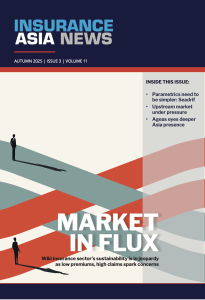McLarens turns 90 this year. With the loss adjusting profession on a journey of reinvention, it is timely to take stock of how the industry has evolved. And, with the likes of consolidation, globalisation, data, and technology all driving change, what the future holds for this venerable profession.
Loss adjusting has changed significantly over the last century. From the early years of the 20th Century where adjusters typically focussed on fires, commercial building losses and war related damage, the stereotype of loss adjusters as an army of grey suits in wellies, brandishing clipboards as they tour disaster sites, became entrenched.
Nowadays, many loss adjusting businesses, offer much more than traditional property and casualty adjusting. From forensic accounting and investigation, and financial lines expertise, to building and construction services, adjusting businesses have expanded in line with the services that insurers and their clients require.
As businesses have become more global, so too have their insurance needs. Consistency of service, technical delivery and data quality are key elements of a global claims service, and international adjusting firms have built their models around these requirements.
The Asia market is a great example. Local customs, practices and jurisdictional requirements must all be respected and observed but the same standard of service is expected, irrespective of where a loss occurs. Strong relationships are required wherever the insurance buyer and insuring market are based.
Consolidation
Consolidation has gone hand in hand with this. The need to grow has always been primarily about meeting client demands. Having a global network allows firms meet the regulatory requirements of the industry and of their clients; to be a size where they can operate in all the global markets required; and to plug any holes that they might have on an industry or specialties basis.
Despite this global growth and consolidation, for many years, loss adjusting has been viewed as one of the more traditional areas of the insurance market: a profession in need of modernisation and disruption.
Yet, today, loss adjusting is on a journey of reinvention, using data and technology to improve the speed and quality of client response, allowing for better reserving and loss estimation, reducing indemnity spend and offering quicker resolution of claims.
Loss adjusters have been shifting to an ever more digital model (accelerated by the Covid-19 pandemic). We operate globally on remote claims systems, where everyone is connected and where we can work effectively as a virtual office. We have extended our digital capabilities to policyholders, with the ability to stream real-time, geo-tagged and tamper resistant image evidence from anywhere in the world. That ability to assess and manage claims remotely has been enhanced considerably by the use of drones, satellite imagery and other technology.
Looking forward, we will undoubtedly see greater use of technology, including artificial intelligence in data collection and analytics.
At lower values, this will enable more claims to be managed on a desktop or automated basis and we will see a greater focus on lifecycle reduction.
The key will be in finding the right balance and ensuring that those claims that require the attendance of an adjuster due to size, complexity or a particular nuance, do find their way to a suitable expert.
Whilst technology will no doubt transform many aspects of work, it won’t deliver the empathy or innovative loss mitigation solutions that quality adjusters bring to such situations, particularly in the complex, commercial and specialty segments of the market. Even after 90 years in business, people are still our key asset.
This brings me to my final point, around workplace culture. With the battle for talent continuing to heat up, the adjuster of tomorrow is looking for an employer with a social conscience, embracing diversity, and promoting ethical and sustainable business. These factors will become increasingly paramount in the age of Loss Adjusting 2.0.
This article was written by Chris Panes, McLarens chief operating officer, Europe, the Middle East and Asia Pacific.
-
Marine: Amid backlogs and breakdowns, Covid-19 maintenance delays put vessel safety at risk
- December 9
Asia is at the sharp end of a hidden maritime risk, with post-pandemic machinery-related losses becoming an even more significant issue.
-
W&I: Balancing growth, commerciality and sustainability in Asia Pacific’s W&I market
- November 6
Warranty and indemnity (W&I) insurance is now being utilised with increasing frequency across a far broader range of deal sizes and geographies in the region.
-
Nuclear: Insurance sector’s role in the region’s nuclear renaissance
- October 21
The biggest driver of nuclear expansion in Asia is the massive increase in power demand from data centres, while the real transformation will be driven by small modular reactor technology.
-
Aviation : Growing pains in Asia’s maintenance industry will have implications for insurers
- July 28
Lack of talent, training, infrastructure, and oversight emerge with Asia Pacific is on track to become the world’s largest aircraft maintenance, repair and overhaul (MRO) market by 2030.
-
QBE | Elevating customer experience, humanising claims: QBE Asia’s ‘Solutions in a Box’
Vastly improving turnaround times and personalising service delivery, QBE Asia’s award-winning, end-to-end bundled claims solutions is a game-changer for the insurance industry.
-
Beazley | What does cyber protection look like from day 1 to day 600 and beyond?
Cybersecurity is no longer just an IT concern, but a governance issue that belongs on the boardroom agenda.
-
Sedgwick | Preparing for the next storm
Insurance industry needs to recalibrate, invest in innovation and strengthen systems, talent and data practices.
-
Peak Re | From climate modelling to market opportunity: Forging a new clarity on Southeast Asia’s climate risk
Southeast Asia's protection gap: a crisis of clarity, not just capital


Chris Panes, McLarens
Loss adjusting 2.0 – what does the future hold for this venerable profession?
Chris Panes, McLarens